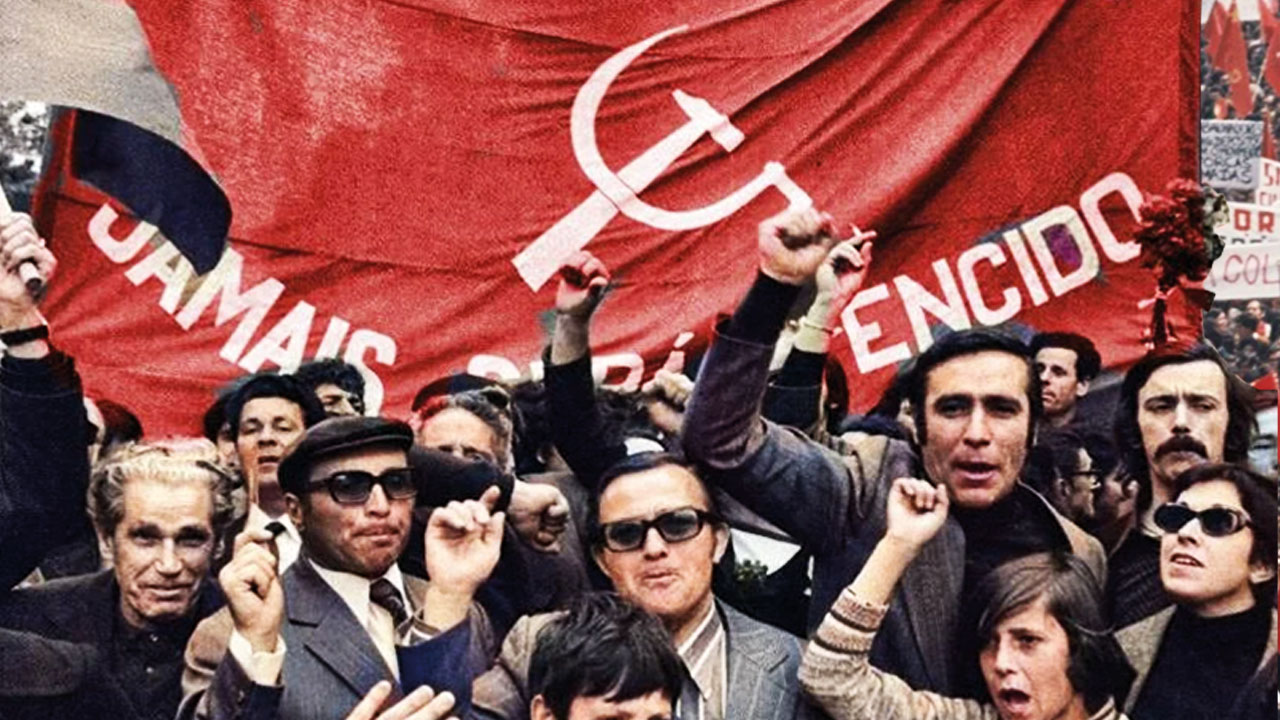Fifty years ago today, the Portuguese Revolution began when a section of the military moved against the dictatorship, unleashing a powerful workers’ movement. This article draws out the lessons from this inspiring, but also tragic episode in history.
Alongside the following article, we recommend the following as further reading for communists to learn the lessons of this great event: The Portuguese Revolution by Alan Woods, written in 1974, several months after the outbreak of the revolution; The Revolution in Portugal by Ted Grant, written on 1 May 1975; Worker’s history: Portuguese Revolution of 1974 written by Phil Mitchinson in 1994 on the 20th anniversary of the outbreak of revolution; and the transcript and audio recording of a talk by Jorge Martín at the 2013 World School of the International Marxist Tendency.
In 1974, Portugal was a poor, isolated, and war-torn country. Seven banks, dominated by seven families, controlled 83 percent of deposits, and 87 percent of commercial portfolios. Along with this enormous concentration of wealth, 75 percent of the active population were wage earners. About one million were industrial workers, out of a population of 8.7 million.
Despite the wealth their labour created, these workers lived in miserable conditions, under the boot of the brutal dictatorship that had been in place since the 1920s.
Lenin used to say that war is the midwife of revolutions. In 1974, Portugal had been waging a war against the people of its African colonies for thirteen years.
This took a toll on the lower echelons of army officers who were forced to conduct this reactionary war. They quickly began to question the war and conspire against the dictatorship. Thus was born the Armed Forces Movement (MFA).
Revolution begins
On 25 April 1974, the MFA staged a coup d’état, which the Portuguese people immediately transformed into a revolution. In fact, it was the popular mobilisation that guaranteed the effective establishment of political and trade union freedoms.
Showing how decrepit and out of touch the regime was, no one lifted a finger to defend it. The revolution was one of the most peaceful in history.
A few days later, the May Day demonstrations – with the participation of millions of workers in brotherhood with soldiers and sailors – were a vibrant consecration of the revolution.
Soon, however, social unrest and the issue of colonial war would spiral out of control. After May Day, the country experienced its biggest wave of industrial action until then.
Strikes, demonstrations, occupations, and even kidnappings of company directors were used as weapons by this spontaneous and explosive movement. These were often led by workers’ committees, created ad hoc in the companies.
This unstoppable tsunami of struggle won big wage increases (often of 100 percent), reduced working hours, paid holidays, equal work, equal pay, expulsion of snitches from the workplace, and more.
Of course, from the point of view of the capitalists, this was a nightmare. But what could they do?
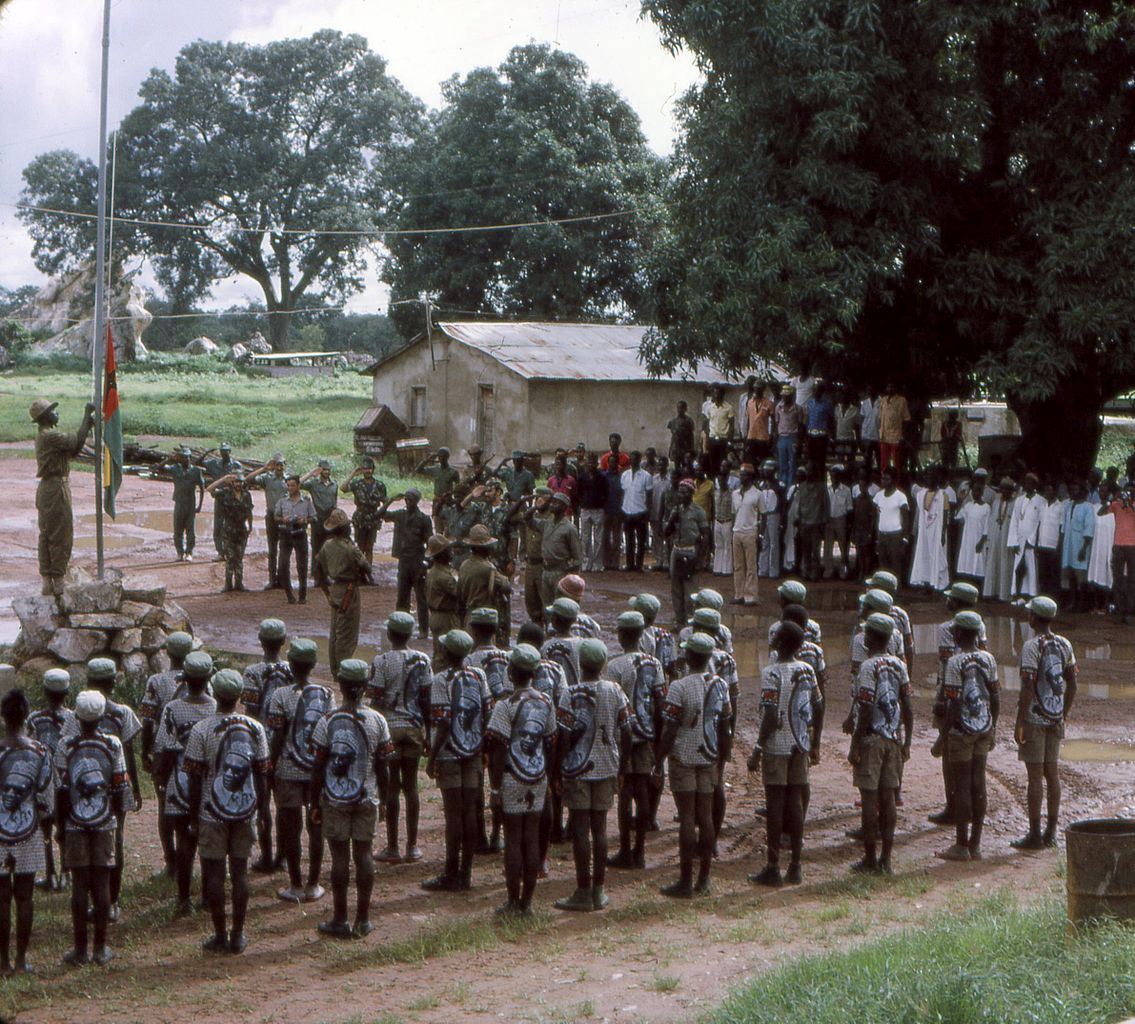 In Guinea-Bissau over 1,000 militia officers, sergeants, and enlisted men signed a communiqué in which they demanded the self-determination / Image: public domain
In Guinea-Bissau over 1,000 militia officers, sergeants, and enlisted men signed a communiqué in which they demanded the self-determination / Image: public domain
The revolution was stirring the depths of the country. Domestic servants organised a union. The newly won freedom of expression filled the cinemas, with audiences eager to watch forbidden films. High school students rebelled against exams. A pro-divorce commission was set up. And political parties of the most varied tendencies were organised.
In short, the masses made the revolution.
In the colonies, Portuguese troops fraternised with the ‘enemy’ and granted the right of self-determination to the African peoples.
In Guinea-Bissau, for example, only four days after the revolution, over 1,000 militia officers, sergeants, and enlisted men signed a communiqué in which they demanded the self-determination of the Guinean people. Five months later Guinea-Bissau was an independent country.
The masses defend the revolution
General António Spínola, the Governor of Portuguese Guinea, assumed the Presidency of the Republic after the coup with the assent of the MFA. The big capitalists were jubilant: here was the new ‘De Gaulle’ who would save the situation, not letting power fall to the street.
A demonstration of the ‘silent majority’ was thus called for 28 September, financed by the business oligarchy. Its aim was to provoke Red Lisbon, giving Spínola the pretext so that in the midst of ‘anarchy’, he could proclaim a ‘state of siege’, assuming full powers.
The demonstration was stopped the day before when communists, socialists, and militants from other left-wing organisations erected barricades at the entrances to Lisbon, as well as surveillance posts all over the country.
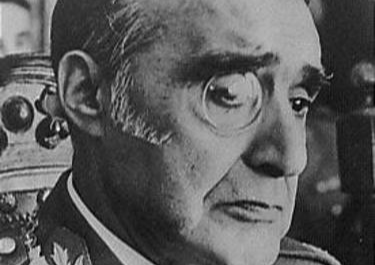 General António Spínola assumed the Presidency of the Republic after the coup / Image: Keystone Press, Wikimedia Commons
General António Spínola assumed the Presidency of the Republic after the coup / Image: Keystone Press, Wikimedia Commons
In these checkpoints, shotguns and all kinds of weapons were discovered in the vehicles of the ‘silent majority’ demonstrators. The workers’ mobilisation once again proved to be decisive, just as it was on 25 April. The initiative was entirely that of the masses, and not with the MFA leadership. The failed coup ended with the resignation of General Spínola.
The MFA was now called upon to lead the revolution. The ranks of this military outfit were themselves radicalised by the political process, by fraternising with the masses. The police, tainted by its performance during the dictatorship, was nowhere to be seen.
Popular frontism
So powerful and widespread was the revolutionary movement, that even the newly created bourgeois parties such as the so-called ‘Social Democratic Party’ (PPD) and Democratic and Social Centre (CDS) felt it necessary to call themselves ‘socialists’!
Instead of organising the seizure of power by the workers, however, both the Socialist Party (SP) and the Communist Party (CP) entered the bourgeois provisional government to collaborate in the ‘construction of democracy’. They moderated the demands of the workers, in the name of the ‘anti-fascist alliance’ with the so-called ‘liberal’ bourgeoisie.
Both the communist and socialist leaders justified this on the grounds that at that time fascism should be defeated and the democratisation of the country should be ensured. They argued that only (long) after the democratic revolution had been completed could there be a socialist revolution.
With this position, they said, it would be possible to secure the support of the middle classes by isolating the fascists. Yet in reality it was a repetition of the same Stalinist ‘popular frontism’ that led to the defeat of the Spanish Revolution in the 1930s.
Nationalisations
More and more sections of the working class, however, were beginning to demand a radical transformation – not for the distant future, but for the present moment.
Forced by layoffs and the closure of companies, the workers took over their management. More than 1,000 firms would become self-managed over the course of 1975. Above all, it was the appeal of nationalisations that were gathering the most sympathy as a remedy for the crises in large companies.
On 2 January 1975, for example, the General Assembly of the Bank Workers’ Union in Lisbon demanded that the government nationalise the sector in order to “defend the interests of the Portuguese people against imperialism and the landowners”.
In the same way, the estates in the Alentejo region were occupied by the rural proletariat.
Whole battalions of the working class had come to the conclusion that, in order to maintain the social advances of the revolution, they had to go all the way: the expropriation of the capitalists.
It is in this context that Spínola (already removed from the presidency) launched his last coup. But the coup plotters did not even have the support of the key military units.
Even the forces that responded to the call for sedition quickly faded away, surrounded by the workers that, once again, took to the streets and the barracks in defence of the revolution.
With the failed coup, the provisional government made a sharp turn to the left, adopting some nationalisations as a weapon against the counter-revolutionary capitalists.
Workers take the initiative
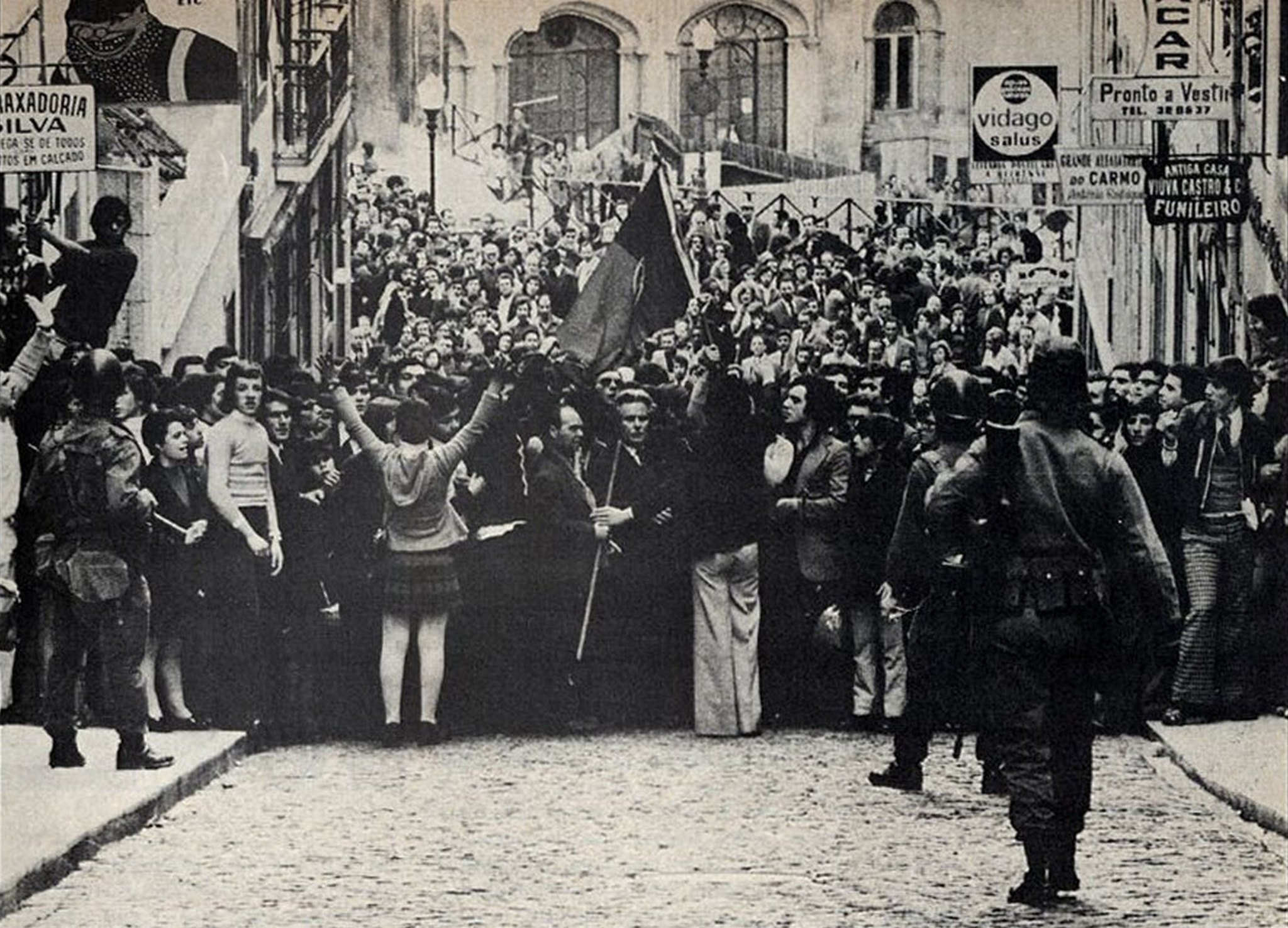 The workers proved that it was not necessary to wait years to implement the ‘maximum programme’ / Image: Hemeroteca Digital, Flickr
The workers proved that it was not necessary to wait years to implement the ‘maximum programme’ / Image: Hemeroteca Digital, Flickr
Marx said that sometimes the revolution needs the ‘whip’ of the counter-revolution. In other words, in a situation of stalemate, the attempts of the bourgeoisie to regain control can provoke a further radicalisation of the movement.
Contrary to what the leaders of the left believed, the workers proved that it was not necessary to wait years to implement the ‘maximum programme’, but only a few hours.
On 11 March 1975, without a plan or a central slogan, the bank workers decided to go on strike, occupy the banks, and freeze the movement of capital. They posted large posters on the façade of the bank premises proclaiming the ‘People’s Bank’, while demanding their nationalisation or… they just wouldn’t reopen!
After the banks, it was the turn of the insurance companies. And since the banks and insurance companies owned or had a stake in a number of the country’s basic enterprises, their total expropriation became not only simpler, but absolutely logical.
At the same time, workers’ self-management was spreading among many small and medium-sized enterprises. In the countryside of the south, in a third of the country, the Agrarian Reform was advancing under pressure from below, with lands and farms being taken.
All over the country, especially in Red Lisbon and Alentejo, there were hundreds and even thousands of workers', neighbourhood, and soldiers’ committees created to coordinate the struggles.
They were the embryos of workers’ power. But no mass party raised the demand for the unification of the committees at a local, regional and national level, as organs not only of struggle, but of the management of the daily activities and needs of the working class.
Because of this lack of coordination, the nationalised enterprises continued to operate in a system of ‘free competition’, according to the rules of capitalism. Also, foreign capital was not touched, in order to avoid international reprisals.
Elections
The elections to the Constituent Assembly took place on the first anniversary of the revolution.
With a turnout of 90 percent, the SP was the big winner, with 37.9 percent of the votes, followed by the liberal PPD with 26.4 percent. The CP came in third with 12.5 percent.
The right-wing CDS occupied fourth place with 7.6 percent, followed by the MDP (a communist ally) with 4.5 percent.
The results showed that even in ‘Red Lisbon’, the socialists, not the communists, won. At the same time, they showed a deep cleavage between a conservative north and a revolutionary south, although the left (SP + CP + MDP + far-left) won by a wide margin.
The left had won the elections. But within the left, the political differences were great.
First of all, the weak result of the Communist Party (12.5 percent) stood out. At the beginning of the revolution, the CP possessed all the trump cards: the prestige of the anti-fascist struggle they had led; an organisation with a few thousand militants; experienced cadres; and a national structure.
The CP led the trade unions, had solid support in the media, and a clandestine military organisation.
Stalinism, however, no longer possessed the prestige and political authority of the immediate postwar period. Its opportunism during the revolution was however the key factor in its loss of support.
As for the Socialist Party, it was founded only in 1973. At first, it had only a few hundred members. At the beginning of the revolution, without ‘responsibilities’ at the trade union level, and seeking to gain support among the workers, its leaders often acted to the left of the CP. At least in words, they supported workers’ self-management and nationalisations.
Divisions emerge
At the beginning of the revolution, the SP and CP were called to the provisional government in coalition with the PPD. This meant they took the flak for the policies of the provisional government.
With only the CP having a real influence on the working class at the beginning of the revolution, however, it was above all this party that had to bear the burden of moderating and stopping the ‘excesses’ of the workers’ struggle.
On the other hand, the leadership of the SP, without deep ties to the working class, had a free hand to opportunistically overtake the CP from the left, at least in terms of its rhetoric.
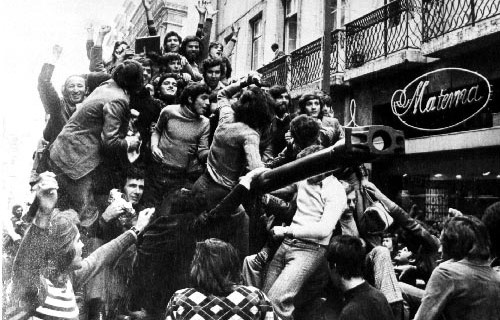 The MFA had relied on the workers’ movement to resist the reactionary coups / Image: public domain
The MFA had relied on the workers’ movement to resist the reactionary coups / Image: public domain
This was the case with the proposal for the Strike Law presented in August 1974. This law prohibited political, solidarity, and interprofessional strikes, imposed a 37 (!) days’ notice period, and allowed, in practice, lockouts by the bosses. In addition, demonstrations could only be held on weekdays after 7pm, and on Saturdays after 1pm.
Despite also being in government, the SP publicly criticised the law, leaving the CP alone defending the most restrictive strike law in western Europe (with the obvious exceptions of Francoist Spain and Greece of the Colonels).
A bigger storm would come with the ‘Law of [Trade] Union Unity’, which enshrined a mandatory ‘Union Central’.
While the CP defended the principle of ‘unity’ – that is, the existence of a single legally enshrined Trade Union Central – the SP protested against the law, arguing that:
“If by means of a decree a single union and a single trade union confederation are imposed, by the same logic tomorrow a single party, a single press, a single list of candidates for the Legislative Assembly can be imposed, etc., etc.”
After the elections, the working class began to appear politically divided. The growing hostility between socialists and communists condemned the workers to disorientation and inaction. In turn, the counterrevolution was now in a position to regain the initiative.
The MFA splits
With the workers’ movement split into two blocs, all those who were opposed to the revolution, but had not had the courage to show it, began to emerge. A wave of assaults on the communist and trade unions headquarters in the north of the country was initiated.
During the following months, far-right terrorism, aided by the Catholic Church, set the country on fire, effectively eliminating the freedom to be a communist in several parts of the country.
As for the MFA, it split along class lines. Some officers hesitantly fell to the side of the proletariat, but the vast majority resolutely went over to the side of the big bourgeoisie.
Until now, the MFA had relied on the workers’ movement to resist the reactionary coups. But it could not remain immune to the conflicts that were now dividing the country.
In the middle of August 1975, the ‘moderates’ set out their views in the ‘Document of the Nine’. This was signed by 80 percent of the army officers, who were tired of so much ‘anarcho-populism’.
In early September 1975, there was a reshuffling of the MFA, giving a clear majority to the moderates.
Counterrevolution
A huge turn had taken place within the armed forces. However, the conquest of a majority within the MFA by the moderates was important, but insufficient.
The radicals continued to control important military forces. Insubordination spread through the rank and file with the creation of the ‘United Soldiers Will Win’ movement, which demanded the expulsion of reactionary officers from the barracks and the destruction of the bourgeois army. They held huge demonstrations with thousands of soldiers.
A new provisional government was formed, this time dividing the portfolios according to the electoral influence of each party. The SP and the PPD were dominant. The CP was represented with a minister, thus having one foot inside the government, and the other in every demonstration against its policies.
From the beginning, it was clear that this new government would carry out a policy of open counterrevolution. Socialism was still the officially pursued ‘goal’, but they said it would not immediately save the country from crisis. Instead the government preached discipline and austerity.
This provoked great resistance on the part of the workers. Not least because the duality of power that continued to exist within the armed forces deprived the government of a reliable instrument with which to repress the workers’ movement.
Coup
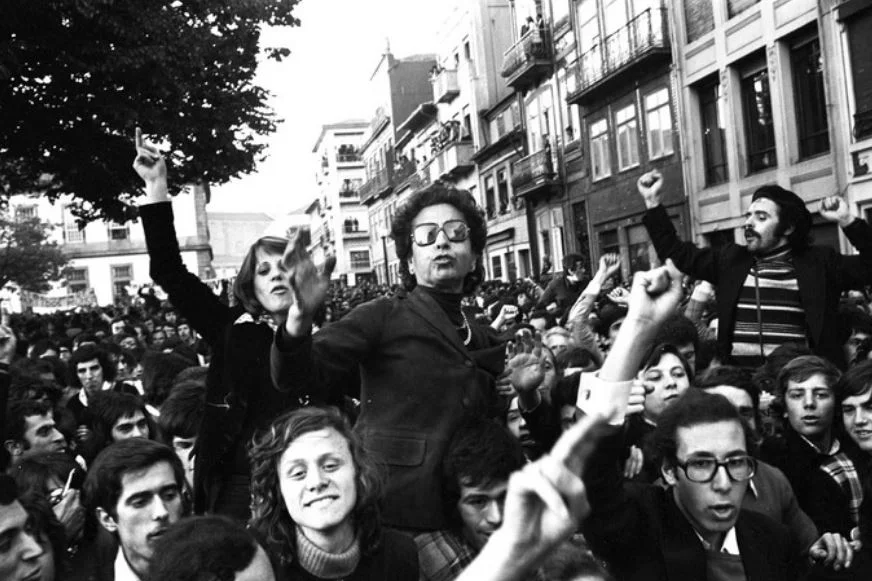 This period was marked by the third great wave of strikes against the austerity that the government intended to apply / Image: public domain
This period was marked by the third great wave of strikes against the austerity that the government intended to apply / Image: public domain
In spite of the political divisions within the working class, this period was marked by the third great wave of strikes against the austerity that the government intended to apply.
Every strike was a small war. And in an unprecedented action, the government itself went on strike, protesting against the strikes and the climate of unrest.
When construction workers surrounded and kidnapped the deputies of the Constituent Assembly on 11 November – so that the government would stop ‘striking’ and sign the collective bargaining agreement – the latter could do nothing but concede.
The government had ordered troops to ‘liberate' the parliament. But when they got there, the soldiers fraternised with the workers, sharing bread, sardines, and red wine.
It was a classic dilemma: neither the bourgeoisie could dominate, nor the proletariat had the leadership to create a new order.
Why was this? Because there was no mass revolutionary party with an anti-capitalist programme capable of overcoming the division that existed in the working class.
Such a programme would have included the multiplication of the workers’, residents’, soldiers’, sailors, and student committees. Above all, it would have called for their unification and coordination at the national level, as organs of struggle and management capable of overthrowing the bourgeois state.
This situation could exist for a while, but it couldn’t last forever.
Under the cover of a protest by paratroopers, a coup was consummated on 25 November. Led by ‘moderate’ officers and the SP, and accepted by the CP (in exchange for its full participation in the bourgeois-democratic ‘normalisation’ that would follow), hundreds of radical officers were arrested in the process.
The dismantling of the military left and the restoration of military discipline were ultimately achieved by this coup. This endgame was the result of the absence of a united and resolute command of the military left. It was successful because, unlike the previous coups, there was no mass movement against it.
Crisis of leadership
Throughout the revolutionary period, political leadership was lacking. The revolutionary workers and soldiers defeated several coup attempts; occupied land, factories, houses, forced nationalisations; and forged powerful unions and parties.
At one point in 1975, Time magazine wrote: “Capitalism is dead in Portugal.” Unfortunately it wasn’t.
It was not for lack of mobilisation or consciousness or spirit to sacrifice that the revolution was lost. What more could have been asked of the workers at that time? What the movement lacked was a leadership that could rise to the occasion.
Fifty years later, capitalism is once again in deep crisis. This is having an impact on the consciousness of the masses.
Revolutionary times loom before us. With the collapse in the credibility of both Stalinism and social democracy, however, there are today incomparably more favourable conditions for the construction of a revolutionary current within the workers’ and youth movements.
That’s what we are building, both in Portugal and around the world. So join us in the Revolutionary Communist International in that task.

